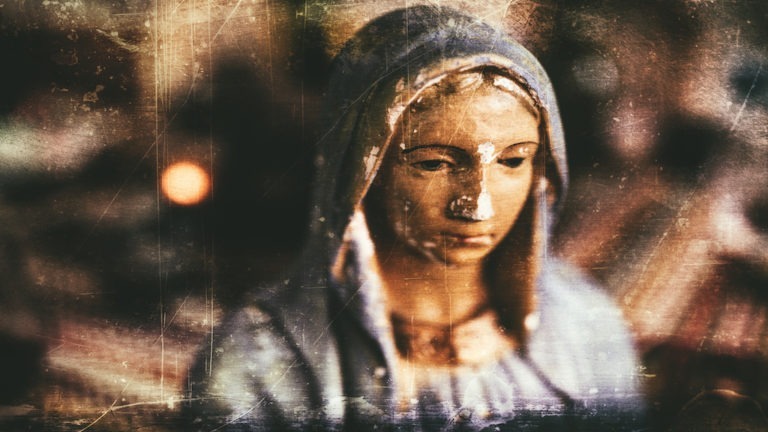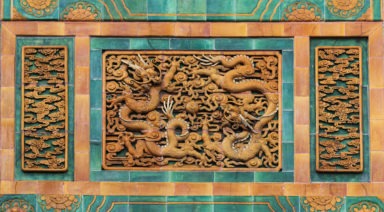Do Jesus, Dionysius, Krishna, And Mithras Share The Same Life Story?

Whether you’re a Christian, Buddhist, Pagan, Muslim, Hindu, Jew, New-Ager, Atheist, or Zoroastrian you’ve probably been privy to the story of Jesus. While Christians like Catholics and Baptists might not agree on the procedures required to celebrate and worship Christ, they agree on these aspects of the Christian narrative:
When Jesus’ mother conceived him, she was a virgin and an angel announced the birth. Upon his birth, wise men and shepherds visited Jesus and his family. They were guided to a remote manger under the constellations. Then at a young age, Jesus had an unusual thirst for spiritual matters and a powerful command of his birth religion. Throughout his life, Jesus taught about love, faith, hope, devotion, and justice.
He performed many miracles, including healing lepers and casting out demons. Jesus defined himself as the son of God and was assumed to be omniscient, omnipotent, and omnipresent. He defined the nature of God to be a trinity, comprised of the Father, Son, and Holy Ghost. He often claimed, “I am the Resurrection,” and promised to cleanse the world of sin.
Jesus gave many lectures and had a core group of disciples who spread his teachings. He was known to be loving, meek, and merciful, and he forgave his enemies and was criticized for associating with society’s outcasts and sinners. He withdrew to the desert to confront all aspects of the universe within himself.
Before being betrayed, Jesus held the last supper for his dearest disciples. His teachings threatened old religious doctrine and fearful politicians, which resulted in Jesus being captured and crucified. After Jesus died, he rose from the dead and appeared to his disciples.
“After three days they found him in the temple courts, sitting among the teachers, listening to them and asking them questions. Everyone who heard him was amazed at his understanding and his answers.”
— Luke 2:46-47
The Life of Krishna
What’s surprising is that most of these story elements are also found in Krishna's narrative. While some might assume that the early Christians stole from the older Hindu religion, it’s fair to say that when the divine births a master, He or She knows that some aspects of the narrative are vital for inspiring devotion to divine love and light. Also, all masters are born from the same cloth, the same mysterious force, and the same eternal consciousness. It might be said that focusing on the narrative detracts from the embodiment of the teachings.
Many other religions claim Christianity stole their stories. Some of the ancient writings on parchments and stone indeed point to this possibility. Regardless, much of the evidence has been poorly constructed and presented. It’s incorrect to say that early Christians and propagandistic writers did not steal from this sacred religion, it’s just that, when considering traditional academic procedures, it’s not apparent.
In all things, our devotion and beliefs are personal, and therefore, sacred. While claiming theft might seem justified, it’s also a distraction. With positivity and focus, we can deepen our devotion to our chosen Gods, refrain from judgment, and circumvent our egos.
No worthy God has a penchant for sustaining a vendetta, ego, or attitude. As all precepts are illusions, details are merely dust.
Horus The Child and The Cult of Isis
Most of the writings that equate Horus The Younger with Jesus were written by comparative religion enthusiasts who often referenced the writings of other enthusiasts, most of whom are from the 18th, 19th, and 20th centuries. While compelling on first read, the thrust of this research does not stem from accredited religious figures, Egyptologists, or biblical scholars. This could limit its credibility.
While the narratives around Horus The Child and his mother Isis are fascinating and potentially illuminating, there are few proven similarities to the story of Jesus. The research on this topic is vague. Some of it points to teachings assumed to have been birthed in the City of Atlantis. It might be that the writings that promote the connection between Horus and Jesus are born from hopes rather than qualified scholarship.
The original narrative of Horus the Younger, very different from Horus the Elder, featured a powerful Sun God who commanded the elements from the sky. He was the protector of those who suffered affliction and pain. Often depicted in the arms of his mother, Isis, the imagery most likely had a substantial influence on Christian iconography in the forms of the Virgin Mary and the Christ Child. While there are many other reported similarities, they may or may not be bonafide.

There is a vast array of conflicting information on this subject, found in libraries and on the web. Because of this, our religious beliefs must stem from the core of our beings and the centers of our devotional hearts.
Mithraism
Mithra is known as the God Sun, and some have claimed him to be the mediator between God and humanity. Sadly, anti-Christian writers may have sought to defame the religion, hoping to victimize their unique God. Other writers, especially those who lived during the years 100-500 AD, such as Justin Martyr, Athenagoras of Athens, and Clement of Alexandria, wanted to remove the stigmas against Christianity in support of making it a legal religion.
While Mithraic writings may have pointed to the notion of salvation, they were most likely based in Zoroastrian principles around man’s participation in the cosmic struggle of a magnificent creation opposing the eternal forces of evil. Other purported similarities between Christ and Mithra have mainly been dismissed, including shared December 25th births, a water-miracle, and the mark of the cross.
Dionysius and Jesus
The culture and religion around Dionysius were born from a philosophical form of Hedonism. While Jesus may have been the true vine of divine love, Dionysius was literally referred to as the God of Grapes, and therefore wine. While both Gods were traveling teachers, performers of miracles, riders of symbolic donkeys, and then murdered, this is where the similarities end.
Regardless of what you believe, your God is whomever you elevate above yourself. With a little faith, Horus, Dionysius, and Krishna could certainly protect you from the perils of this world and the demons within your nature.
In all religions, the details are sketchy. We’ll never know when or how Christ, Mithra, or the other gods in human form were born. Since all of their narratives were written many years after their deaths, we can only assume their stories were born from combinations of divine intervention, subjective truths, mythology, and hope. While we can love them and honor them, we might never know the truth of their physical lives and purpose. It might also be true that the details are unimportant.
The prevailing truth of our lives is that the divine can spring forth and lovingly envelop our spirits in an instant. She can birth a master from a vibrant flower or a ray of sunlight. He can conjure realities and spacetime trajectories that appear to last forever, yet only last a moment.
There are many ways to connect with a loving, divine master. Given their eternal, non-egoistic natures, they probably don’t care which name you call them. Whether it’s Shiva, Saraswati, Aphrodite, Ares, Sol, Tristan, Dolya, Gabrielle, Isolde, Khepri, Koko, or Lena, because they were either born from light or elevated by human consciousness, their vibrations are bright, beneficial, and eternal.
There are many types of gods and masters. There are living masters, birthed/deceased gods, and divine beings that solely live within the other realms. It is up to each of us to command our divinity, bow to the eternal light, and remain humble in our pursuit of perpetual resurrection.
Alignment of Jupiter, Neptune in Pisces Hasn't Occurred in 160 Years

Jupiter and Neptune will be in conjunction in Pisces, which hasn’t happened in more than 160 years. What does this mean for humanity and the planet? And how should you greet this cosmic phenomenon?
The two planets will soon be in conjunction, where they appear to be close to each other when observed from Earth, and they will be in Pisces, something we have not seen since 1856.
Astrologer Mercedes Arnus Arraut explains what this means to us.
“Jupiter is the planet of news, knowledge, (and) media, and Neptune is the planet of spirituality, higher reals, higher dimensions, the ethereal — things that you cannot explain, the mystical,” Arraut said. “Something very interesting is that Pisces, the constellation where both Jupiter and Neptune unite, is the realm of both Jupiter and Neptune because before Neptune was discovered the Pisces constellation was ruled by Jupiter. So the fact that both these celestial bodies unite in both of their realms in Pisces, it’s very redundant energy where this mystical Pisces energy is going to be blooming all of our lives.”
This conjunction is in April, but we may be feeling the effects now.
“So the time this conjunction peaks is in the middle of April. This doesn’t mean we’re only going to feel it in April, because starting the Piscean month, which starts the 18th of February, we’re going to be having a boom of Pisces energy because the Sun is going to be walking towards this constellation — throughout this constellation — and both highlighting the energy of both Jupiter and Neptune in Pisces,” Arraut said.







